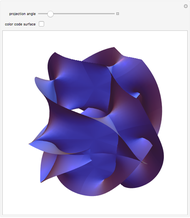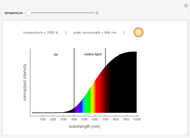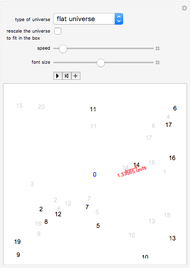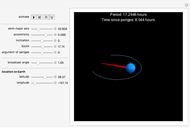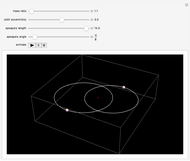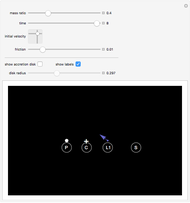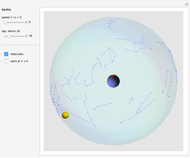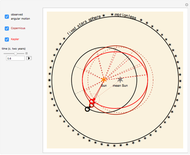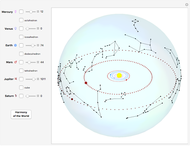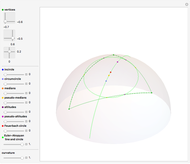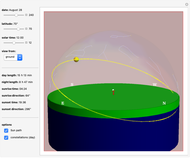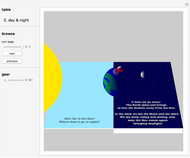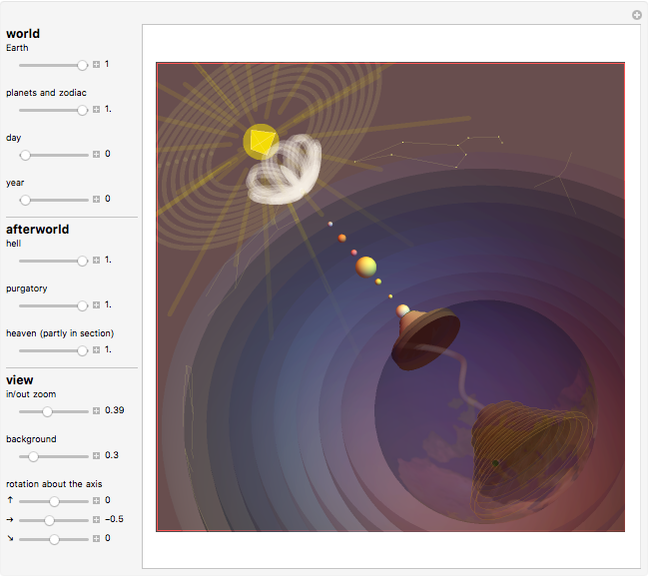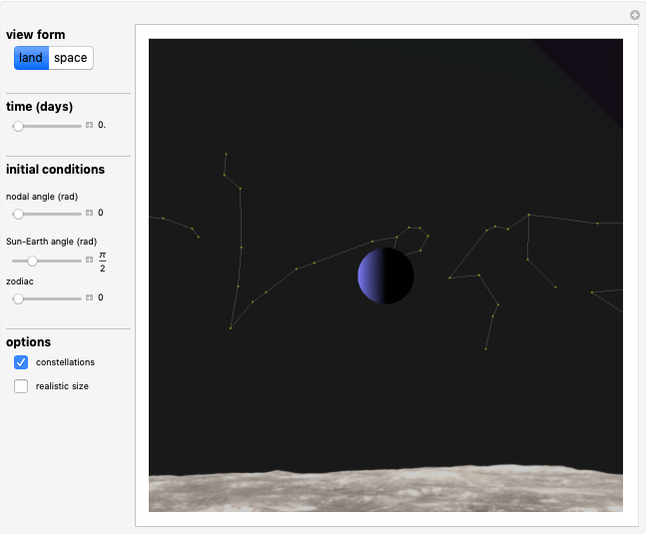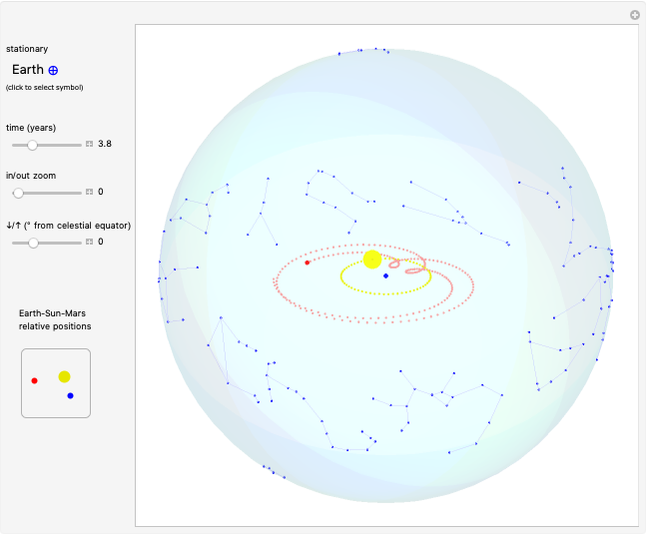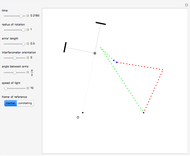The Universe in a Popup Book

Requires a Wolfram Notebook System
Interact on desktop, mobile and cloud with the free Wolfram Player or other Wolfram Language products.
A popup book is a three-dimensional paper book with movable parts animated by turning pages, sliders, strings, pulleys, and so on. In a sense, this is an precursor of the Wolfram Demonstration. Popup books first appeared in the late Middle Ages as a computational aid and a means to demonstrate astronomical models. A notable early example was the Astronomicum Caesareum (Emperor's Astronomy) by Petrus Apianus (1540). In modern times, popups have evolved into artistic objects to amuse both children and grownups.
[more]
Contributed by: Antonella Maraner and Paolo Maraner (March 2016)
After work by: Livia Conti, Antonella Maraner, and Margherita Marsili
Partly based on a program by: Simon Woods
With additional contributions by: Jiannis K. Pachos
Open content licensed under CC BY-NC-SA
Snapshots
Details
This is part of a project to introduce students in some primary schools in the Padua region of Italy to modern cosmology. Children were taught to rebuild parts of a popup book describing the origin of the universe. The manual work on the mechanisms causing the movement of the popup's "transformations", "volvelles", "flaps", "pop outs", and so on [1] conveys the idea that every effect is produced by a cause, thus introducing the central idea of scientific thinking. In addition, the concrete production of an artifact makes a deep and lasting impression on the child's mind, allowing him or her to effortlessly remember the key ingredients of the modern cosmological view.
This Demonstration is loosely based on the prototype book created for the project [2]. It substantially follows the same outline, although most of the tables have been redesigned to fit the new medium. No attempt has been made to reproduce the exact mechanisms used in the popup book, instead taking full advantage of the powerful three-dimensional interactive graphics offered by Mathematica. The book lends itself to different levels of reading, giving new insights in subsequent rereading; for example, the mechanism producing the phases of the Moon shown in Table 2 or the kinematic equivalence of the Ptolemaic and Copernican systems in Table 7. The filaments in the large-scale structure of the universe used in Tables 18 and 19 are generated using a program by Simon Woods [3].
References
[1] Wikipedia. "Pop-up book." (Mar 24, 2016) en.wikipedia.org/wiki/Pop-up_book.
[2] L. Conti, A. Maraner, and M. Marsili, Come è saltato fuori l'Universo (How did the Universe pop up), Padua: unpublished, 2014 (in Italian).
[3] "Distribution of Random Points in 3D Space to Simulate the Crab Nebula," Mathematica Stack Exchange. (Mar 11, 2013). mathematica.stackexchange.com/questions/20882/distribution-of-random-points-in-3d-space-to-simulate-the-crab-nebula.
Permanent Citation






